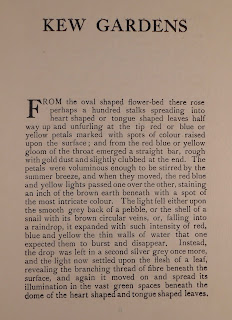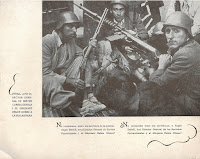This week, a Dartmouth Art History class, "The Photographic Medium," is visiting us to look at a variety of ways in which photographic images and technologies have evolved over the last 170 years. The class promises to be an exciting one, with examples of stereoscopic cards,
alumni photo albums from World War I, and
Gardner's Sketchbook of the Civil War, among others, available in the room for the students to explore. One of the important themes that we will be touching upon is how photography becomes a powerful tool for wartime propaganda. Along with a
pictorial of the Polish military on the eve of World War II, we also have nearly a full run of
Visions de Guerra i de Reraguarda, a publication that was issued by the Catalonian minister of propaganda from 1937 to 1938 during the Spanish Civil War. These texts were meant to increase global support for the anti-fascist movement in Spain as well as raise morale for the Republican fighters who were beginning to flag after more than a year of bloodshed.
In a clear statement of regional and cultural independence, the photographic captions in each volume are printed in both Spanish and Catalan. The publication was issued biweekly in two series, A and B.

Series A is committed to showing scenes from the initial military coup in Barcelona and Madrid in July 1936 and its immediate aftermath, while Series B is focused on current events of the war. Here at Rauner, we are fortunate to have a complete run of Series A and 1-17 of the 20-volume Series B. The scenes of common citizens, dressed in everyday clothes but wearing helmets and holding rifles and fighting for democracy against a fascist regime that ultimately would defeat them in 1939, are disconcerting and yet strangely inspiring.
To see the A Series of
Visions de Guerra i de Reraguarda, come to Rauner and ask for
Rare DP269.15 .V57. To see the B Series,
DP269.15 .V572.
 "From the oval shaped flower-bed there rose perhaps a hundred stalks spreading into heart shaped or tongue shaped leaves half way up and unfurling at the tip red or blue or yellow petals marked with spots of colour raised upon the surface; and from the red blue or yellow gloom of the throat emerged a straight bar, rough with gold dust and slightly clubbed at the end."
"From the oval shaped flower-bed there rose perhaps a hundred stalks spreading into heart shaped or tongue shaped leaves half way up and unfurling at the tip red or blue or yellow petals marked with spots of colour raised upon the surface; and from the red blue or yellow gloom of the throat emerged a straight bar, rough with gold dust and slightly clubbed at the end."

